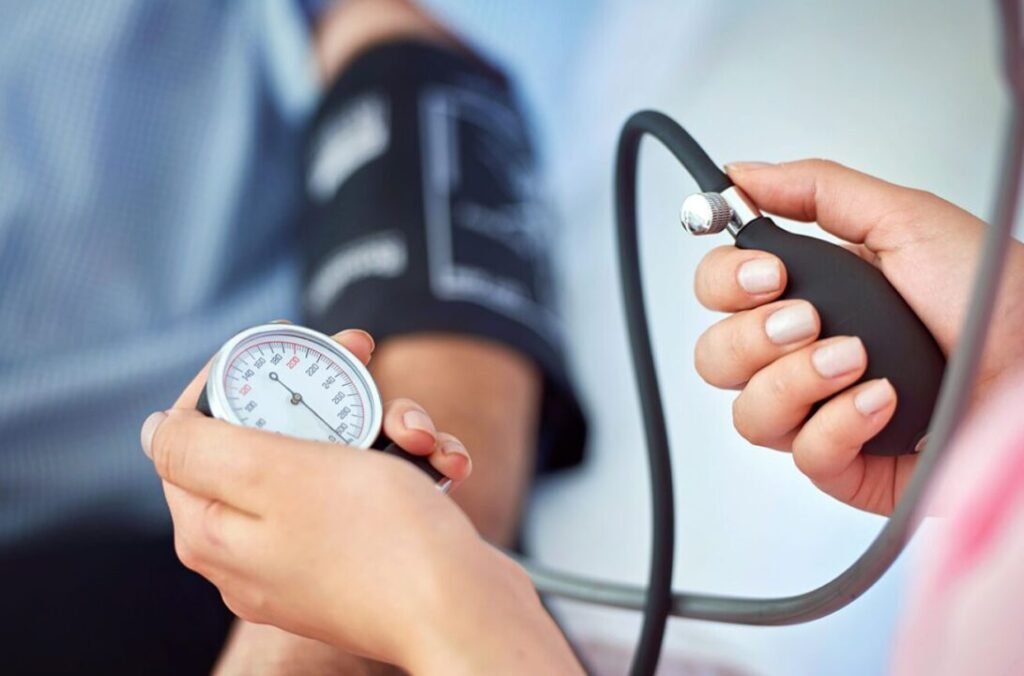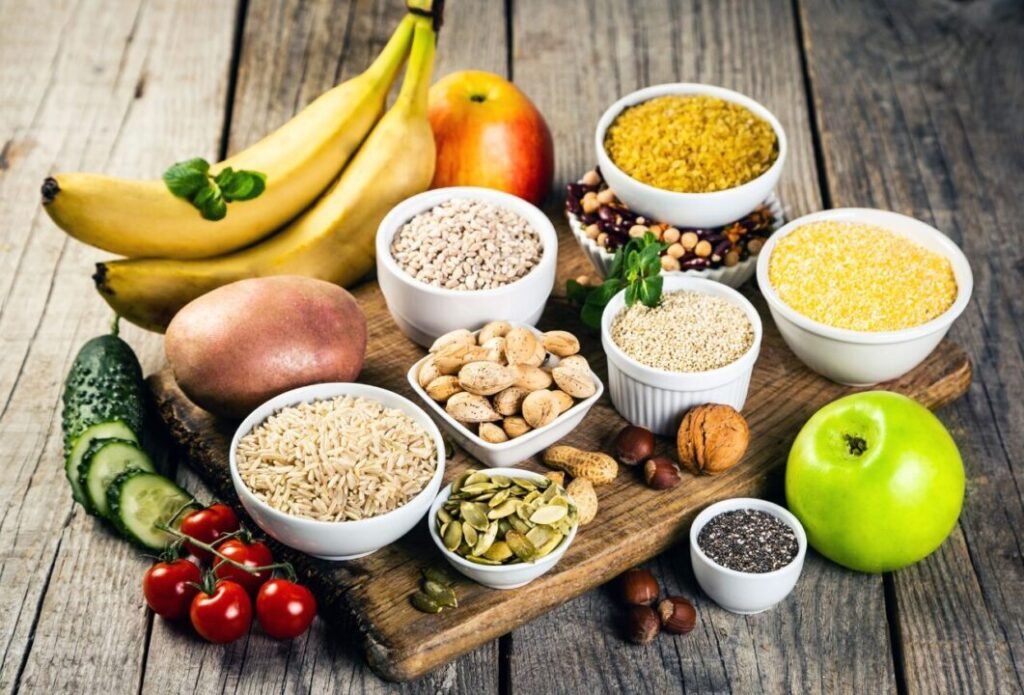The DASH Diet, standing for Dietary Approaches to Stop Hypertension, is a balanced eating plan developed by the National Institutes of Health (NIH) to reduce high blood pressure.
Health benefits extend beyond blood pressure management, potentially preventing heart disease, stroke, type 2 diabetes, and certain cancers.
Key components of this diet consist of fruits, vegetables, whole grains, lean proteins, and low-fat dairy, aimed at reducing sodium, sugar, and saturated fats intake.
It advocates for nutrient-rich foods, moderation in eating, combined with physical activities. For a deep understanding of how DASH promotes heart health and manages hypertension, proceed.

Understanding the DASH Diet
The DASH Diet, an acronym for Dietary Approaches to Stop Hypertension, is a scientifically proven dietary plan specifically designed to lower blood pressure through a balanced and healthy eating regimen.
The diet emphasizes the intake of fruits, vegetables, whole grains, lean proteins, and low-fat dairy products, while minimizing the consumption of saturated fats, cholesterol, and sodium.
The plan encourages moderate alcohol consumption and physical activity.
The DASH Diet, developed by the National Institutes of Health (NIH), has been recommended by several health organizations, including the American Heart Association and the Mayo Clinic.
It is not just a diet, but a lifestyle change that aims to promote a healthier, longer life through eating habits that ultimately lead to lower blood pressure, offering individuals a path to freedom from hypertension.
The DASH diet emphasizes:
- Fruits and vegetables
- Whole grains
- Low-fat or fat-free dairy
- Lean protein (fish, poultry, beans)
- Nuts, seeds, and legumes
- Healthy fats
- Limits sodium, added sugars, saturated and trans fats
Benefits of the DASH Diet
While the primary aim of the DASH Diet is to lower blood pressure, it also offers a myriad of other health benefits. For instance, the diet contributes to weight loss due to its emphasis on reducing sodium and sugar intake.
It also aids in the prevention of heart disease and stroke, as it promotes heart-healthy eating habits such as consuming low-fat dairy products, lean protein, and plenty of fruits and vegetables.
The DASH Diet has also been found to reduce the risk of developing type 2 diabetes and certain types of cancer.
Additionally, it encourages a lifestyle change which promotes overall health, not just a quick fix.
The freedom to choose from a variety of nutrient-rich foods makes this diet a feasible and beneficial choice for many.
DASH Diet Food Groups
In understanding the principles of the DASH Diet, it is important to familiarize oneself with its recommended food groups: fruits, vegetables, whole grains, lean proteins, and low-fat dairy products.
These food groups, when integrated into your daily eating routines, work synergistically to lower your blood pressure. Fruits and vegetables are abundant in essential nutrients and fiber, which assist in reducing hypertension.
Whole grains, rich in fiber and minerals, aid in maintaining a healthy heart. Lean proteins, such as fish and poultry, provide essential amino acids without the harmful fats.
Low-fat dairy products offer calcium and vitamin D, important for bone health.
By adhering to these food groups, the DASH Diet can effectively help in managing and preventing high blood pressure.
Meal Planning for DASH Diet

After understanding the key food groups in the DASH diet, the next step involves strategic meal planning to incorporate these nutrient-rich groups into your daily dietary routine.
This strategy includes planning meals around whole grains, fruits, vegetables, and lean proteins.
A typical day might start with a breakfast of whole-grain cereal and a banana. For lunch, consider a salad with lean chicken, and a whole-grain roll. Dinner could be grilled fish with a side of vegetables and brown rice.
Also, remember to integrate low-fat dairy products and nuts into your diet. Whether you’re cooking at home or dining out, consciously making these choices can result in a heart-healthy diet that supports your overall well-being.
Keep in mind, moderation is key in all food groups.
Sample DASH Diet Menu (Approx. 2000 Calories)
Breakfast
- Oatmeal with berries and walnuts
- 1 cup low-fat or fat-free milk
- Coffee or tea (unsweetened)
Snack
- Small apple with a handful of almonds
Lunch
- Large salad with grilled chicken breast, mixed greens, tomatoes, cucumbers, a variety of other vegetables, and a light vinaigrette dressing
- Whole-wheat bread (1-2 slices)
- Unsweetened iced tea
Snack
- Low-fat Greek yogurt with mixed fruit
Dinner
- Baked salmon with lemon and herbs
- Brown rice
- Steamed broccoli or green beans
- Small whole-wheat roll
Dessert (Optional)
- Fresh fruit salad
DASH Diet’s Impact on Blood Pressure
Furthermore, the DASH diet’s emphasis on nutrient-rich foods and moderation has shown considerable effectiveness in managing and lowering high blood pressure.
According to research, the diet’s high intake of fruits, vegetables, lean proteins, and whole grains, while limiting sodium, red meats, and sugar-sweetened beverages, directly contributes to blood pressure reduction.
This effect is due to these foods’ rich supply of essential nutrients like potassium, calcium, and magnesium, which are known for their blood pressure-lowering properties. The National Institutes of Health has consistently endorsed the DASH diet as a first-line dietary strategy for hypertension management.
Additionally, its effectiveness increases when combined with other lifestyle modifications like regular physical activity and moderation in alcohol intake.
Tips to Incorporate DASH Diet
Wondering how to seamlessly incorporate the DASH diet into your daily life?
Start by gradually adding more fruits, vegetables, and whole grains to your meals.
These foods are rich in nutrients like potassium, calcium, and fiber that are essential for maintaining healthy blood pressure.
Next, try to limit your intake of sodium by replacing high-salt foods with herbs and spices. Also, opt for lean proteins and low-fat dairy products to reduce saturated fat intake.
Plan your meals ahead to make sure that you meet the recommended daily servings for each food group. Regular physical activity can enhance the benefits of the DASH diet.

Final Words
To sum up, the DASH diet offers a scientifically-supported approach to reducing blood pressure and promoting overall health. By focusing on nutrient-rich food groups and proper meal planning, individuals can effectively manage hypertension.
The diet’s emphasis on moderation and variety guarantees a sustainable and beneficial dietary regime. Incorporating the DASH diet into daily life can greatly enhance health outcomes, highlighting the profound impact of dietary choices on our wellbeing.

